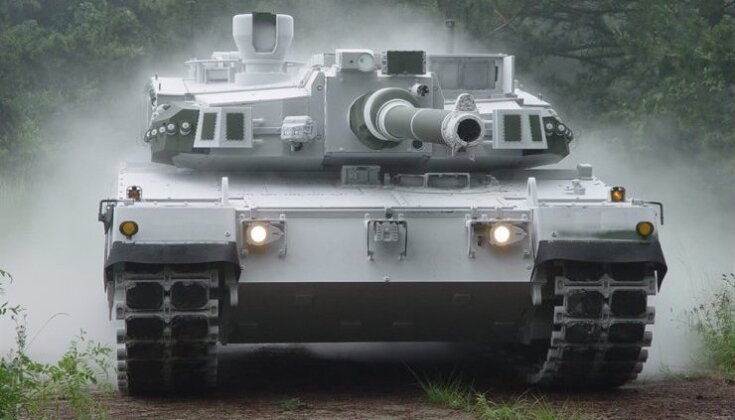Military Watch Magazine / USA
South Korea and Poland are reportedly close to finalising a $14.5 billion arms deal, which alongside the sale of 48 F-50 lightweight fighter jets will include transfers of around 850 tanks and artillery pieces. These will include approximately 670 K9 Thunder self propelled guns, and 180 modernised variants of the K2 Black Panther tank. The K2 is the only NATO compatible tank in production worldwide using an autoloader, meaning its crew requirements are reduced from four to three, and is widely considered the most capable tank in the world rivalled only by the Russian T-14. While the T-14 has a number of significant performance advantages, including an unmanned turret, greater penetration on its anti armour rounds, and superior armour, Russia has neglected to invest in meaningful acquisitions leaving its armoured units poorly placed to counter large numbers of K2s in the event of a Russian-NATO war or a limited Polish intervention in Ukraine. Russian sources have repeatedly cited the lack of threats from modern Western tanks as a reason why the T-14 did not receive considerable domestic orders, with NATO member states introduced no new tank classes since 1998 and the large majority dating back to around 1980. The K2’s deployment in Europe, however, and development of new tanks such as the German Panther, could potentially spur greater investment by Russia in the T-14 and other more ambitious programs.
Poland is reportedly planning to purchase around 1000 K2 tanks, up from prior estimates of around 800 preceding the outbreak Russian-Ukrainian War. The Eastern European state’s Deputy Prime Minister and Defense Minister, Mariusz Blaszczak, stated on July 22 that the acquisition “will significantly increase Poland’s security and the strength of the Polish Army. Fast delivery and industry development are key! We reconciled the often divergent interests of soldiers and the arms industry. It’s a win-win situation for both groups. We’re signing contracts next week!” As a result of purchases from Korea, he claimed, “Among the European countries [and] NATO, Poland will have the strongest land forces.”
The K2 has approximately double the engagement range of modern Western tanks, although it is still just two thirds the range of the T-14’s own main gun. Following initial purchases of 180 K2 tanks, 820 enhanced K2PL tanks are expected to be delivered from 2026 under followup contracts and partly produced in Poland itself. Improvements will include reinforced armour, a new omnidirectional observation system, and a hard-kill active defence system. A derivative of the tank designated the K3PL has also been reported but not confirmed, and could bring numbers of Korean tanks in Polish service to well over 1000. The new tanks are expected to provide an overwhelming performance advantage over the T-72B3/B3M which form the large majority of Russia’s frontline tank units, with even Russia’s top frontline tank the much more capable T-90M potentially struggling to counter K2s. The sheer numbers in which the K2s will be deployed will also leave T-90M units very significantly outnumbered based on Russia’s current acquisitions plans, under which no more than 600 T-90Ms are to enter service. With the K2 far outperforming any other tank Russian previously saw deployed near its borders, the transfers of these vehicles is potentially one of the most threatening arms deals to Russia’s security to be reached since the Soviet collapse in 1991. While the future evolution of Russia’s armoured units remained highly uncertain after the outbreak of the Russian-Ukrainian War, the K2 deal with Poland, and planned acquisitions of similar numbers of Atlay tanks based on the K2 by Turkey, only raises more questions regarding how the Russian Defence Ministry may respond.
